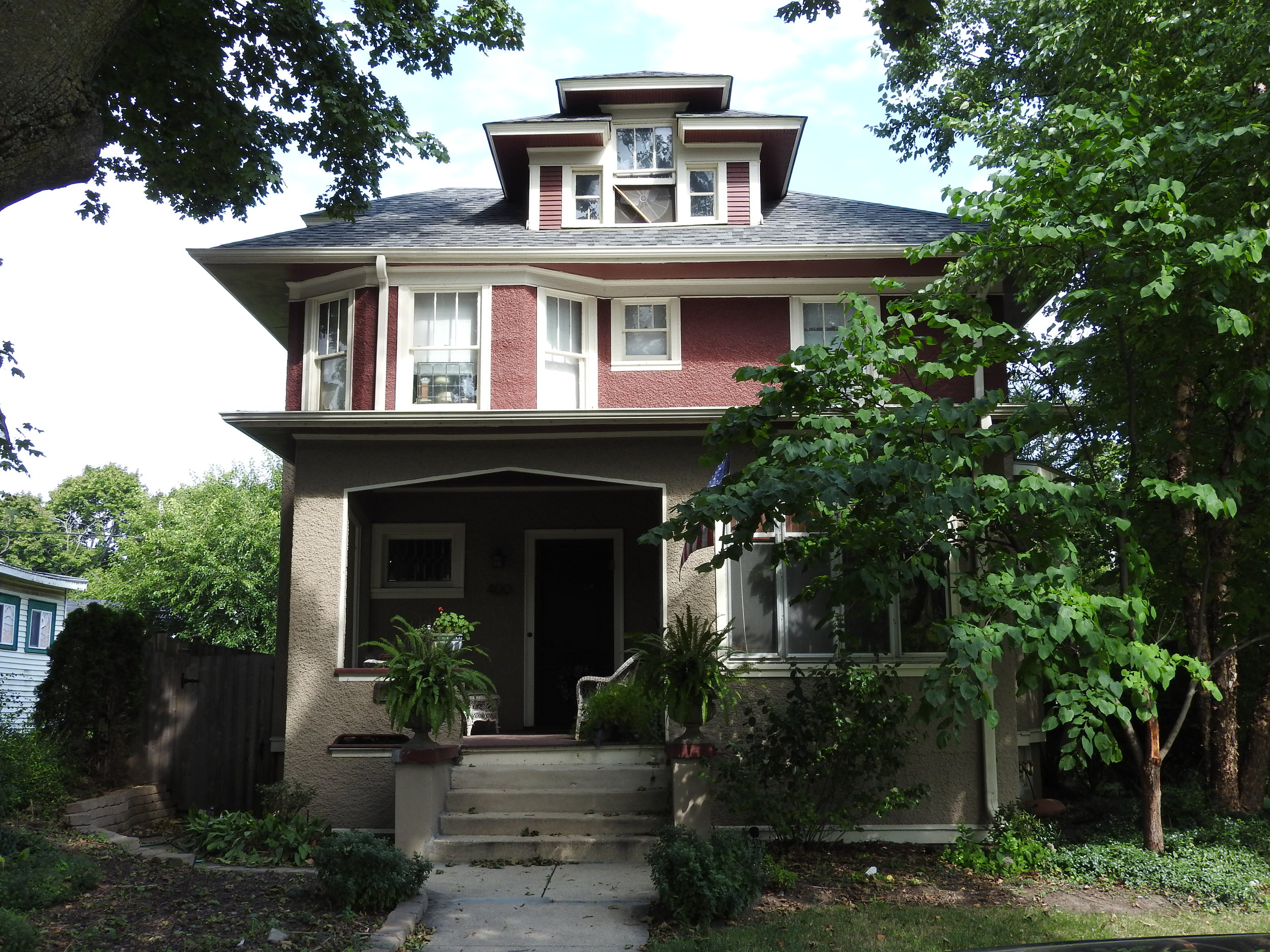400 WALNUT AVENUE
HISTORIC SIGNIFICANCE
During the economic boom at the turn of the century, the near west neighborhood expanded in unprecedented growth where modest, single family homes could finally be built by the blue-collar worker. These homes were interspersed amongst successful businessmen and professionals whose homes were more embellished such as at 400 Walnut Avenue.
400 Walnut Avenue was built in 1912 and had seen an array of ownership, however, the longest being the Albert W. Muntz family. The Muntz family included Albert, his wife, Henrietta, and their four daughters. They resided in the home from 1925 to 1951. The Muntz name was a prominent one in Elgin beginning with Albert’s father, Albert Sr. Albert Sr., and his family, owned and operated the Elgin Storage and Transfer Company, which was a livery, moving and storage business. The business, as well as Albert Sr.’s home, was located in a unique 3-story building at 166 Symphony Way in 1890. The company operated their business here for more than 25 years running horse drawn buses carrying the Elgin Watch Factory workers to and from their homes. Eventually when horses of the livery company were slowly outnumbered by the introduction of the automobile, the company moved to 300 Brook Street. There, you will notice three, stone shields over the doors with lettering “ES-T Co.” carved in the central shield. Albert eventually became the company’s treasurer and later, its president.
ARCHITECTURAL SIGNIFICANCE
400 Walnut Avenue is an excellent example of the American Foursquare typology with Prairie Style influences. A common misconception with the Foursquare is that it is referred to as a style. However, varying detailing found on Foursquares throughout the United States suggests that it should be categorized as a type. The hipped roof with wide overhanging eaves, the multi-lite top sash over a one lite bottom sash, and the horizontal banding found at its second flooring suggesting horizontality, are a few of its Prairie Style details.
The home is clad in stucco, which at the time had an initial cost that was higher than wood siding; however, the benefits outweighed those costs. Stucco was considered maintenance-free and could be tinted a variety of colors, though, soft beige and brown appeared to be the most popular at that time.
TIMELINE OF PREVIOUS OWNERS
Sources: Gifford Park Association; Audio: TextAloud

